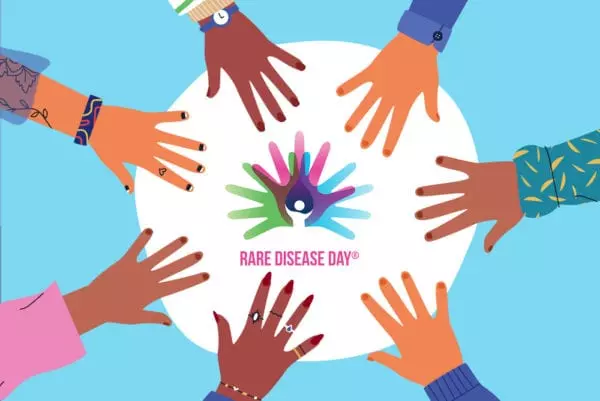
Rare Disease Day is February 29, 2020. The annual observance brings attention to rare diseases, like mesothelioma, and how they impact patients. The day also serves as an opportunity to fundraise for much-needed research for these conditions.
This year’s theme focuses on redefining rare. In the United States, a rare disease refers to a condition diagnosed in fewer than 200,000 people. Mesothelioma, for instance, is diagnosed in approximately 3,000 new cases each year. Despite limited annual diagnoses, research shows more than 300 million people around the world live with a rare disease. We recently spoke with several medical professionals about rare diseases and how the public and medical community can better support these patients.
Recognizing the Challenges of a Rare Disease
There are many challenges for patients diagnosed with a rare disease like mesothelioma. Because research is often limited, diagnosis and treatment can be difficult. In the case of mesothelioma, the disease is often misdiagnosed as common ailments because of nonspecific symptoms. This delay in diagnosis can limit available treatment options and impact prognosis.
Dr. Inna Husain, an assistant professor at Rush University Medical Center, explained what it means for a condition to be considered rare. “To me, rare simply means it is not commonplace. It does not take up a chapter in a medical education book nor is knowledge about it shared over many fields. It is what we call in medical school a ‘zebra’ diagnosis. We are even taught, ‘when you hear hoofbeats, think of horses, not zebras.’”
Dr. Husain continued, “For patients with a ‘zebra’ or rare condition, this can be challenging. For a patient with a rare condition, it is everything to them. It can be a struggle to get a diagnosis and then find providers who know how to care for it.”
Such challenges can also lead to a patient with a rare condition feeling isolated and alone. Dr. Shuhan He, an emergency medicine physician at Massachusetts General Hospital, told Mesothelioma.com he believes patients with rare conditions often face a social stigma.
“This stigma can be debilitating on two fronts. First, personally, because the person sees themselves as something strange and different than the rest. Second, it isolates the person socially as they are often left to exist on the margins of society,” Dr. He said. “We all have to work harder and acknowledge there are people suffering and we are doing nothing to help them when we isolate them.”
“We do not recognize the heroism such people have. It takes a lot of emotional strength to fight with the condition and social stigma at the same time,” Dr. He continued.
How to Provide Better Support for Rare Diseases
A primary focus of rare disease advocates is providing patients with better support. Rare Disease Day highlights the need to help patients overcome the feeling of being alone. The annual event also focuses on increasing public awareness and pushing forward research needed to find cures.
Rare Disease Day is a great opportunity for people to start getting involved in these missions.
“Patients and families of patients can help by raising awareness about the condition and the underlying social and economic issues,” Dr. He told Mesothelioma.com. “And it is up to the experts to find viable solutions. In the end, the only way we can adapt is through a coordinated effort that combines the work of medical researchers, doctors, patients, activists and politicians.”
In addition to improving public awareness, many doctors and others in the medical field agree that finding a community and support system goes a long way.
Lauren Webb, Licensed Clinical Social Worker and Director of Support Services and Education at the Les Turner ALS Foundation, said, “When you have a rare disease, it can feel isolating and lonely. But when you find someone with similar experiences, the understanding is strong and the bond that forms can be remarkably helpful.”
Dr. Husain similarly expressed the importance of finding a community. She told Mesothelioma.com, “When I diagnose a patient with idiopathic subglottic stenosis (a rare trachea condition), I often will ask if they would like another patient to reach out. In other words, I try to get patients connected to each other.”
Finding support among others with a similar diagnosis, as well as the broader public, is essential to achieving the goals of Rare Disease Day: providing equitable access to health care, social care and social opportunities for those diagnosed with a rare disease.
Get Involved This Rare Disease Day
There are many opportunities for people to get involved on Rare Disease Day and beyond. Dr. Husain and Dr. He recommended ways for the general public to make a difference:
- Fundraise on one’s own or attend fundraising events for research
- Raise awareness on social media
- Research rare conditions like mesothelioma to better educate oneself and the larger community
Additionally, Dr. Husain notes the medical community can further advocate for patients with rare diseases. She suggests medical practitioners help by reaching out to insurance companies for better coverage of rare conditions, educating the broader medical community on these conditions and publishing more resources for rare diseases.
No matter how people choose to get involved on Rare Disease Day, the impact of such advocacy is clear each year.
“One positive aspect of the rare disease community is the power of our unified voices. We may be ‘small,’ but we are mighty,” Lauren Webb said. “Our collective community provides access to compassionate and bright people and organizations who support best practices in terms of care, advocacy, funding and shared research. Working together in this rare disease community strengthens our impact.”




